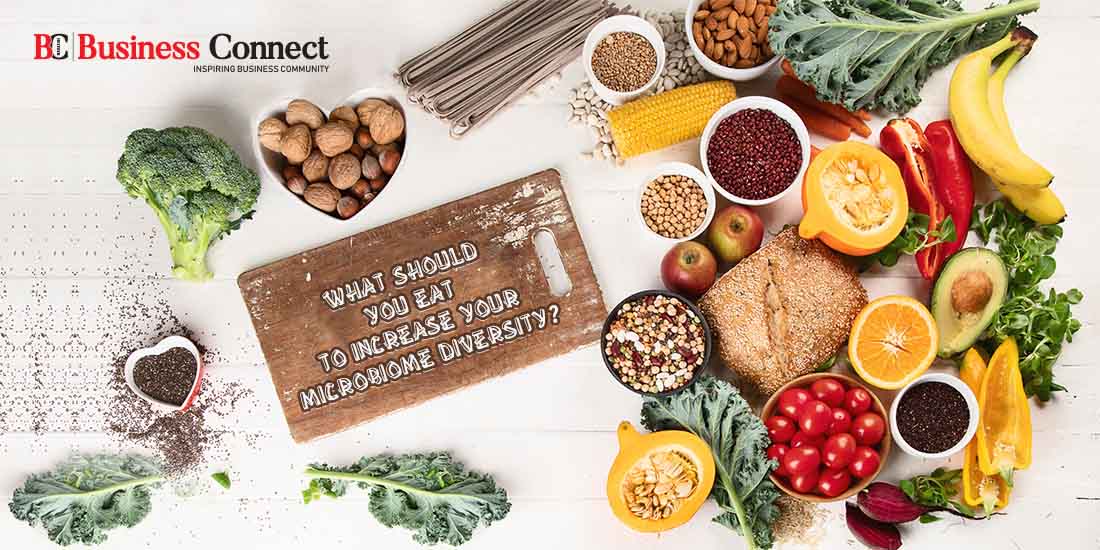What Should You Eat to Increase Your Microbiome Diversity?
Welcome to India’s one of the best Business Magazine platforms, Business Connect India, where a future entrepreneur gets inspired by the idea and story. We are here with one of the most trending health topics, which has been covered by many people recently – how to increase microbiome diversity? or how to increase good bacteria in the gut naturally? Before jumping to the solution, let’s try to understand. What does it do with health?
What is the microbiome?
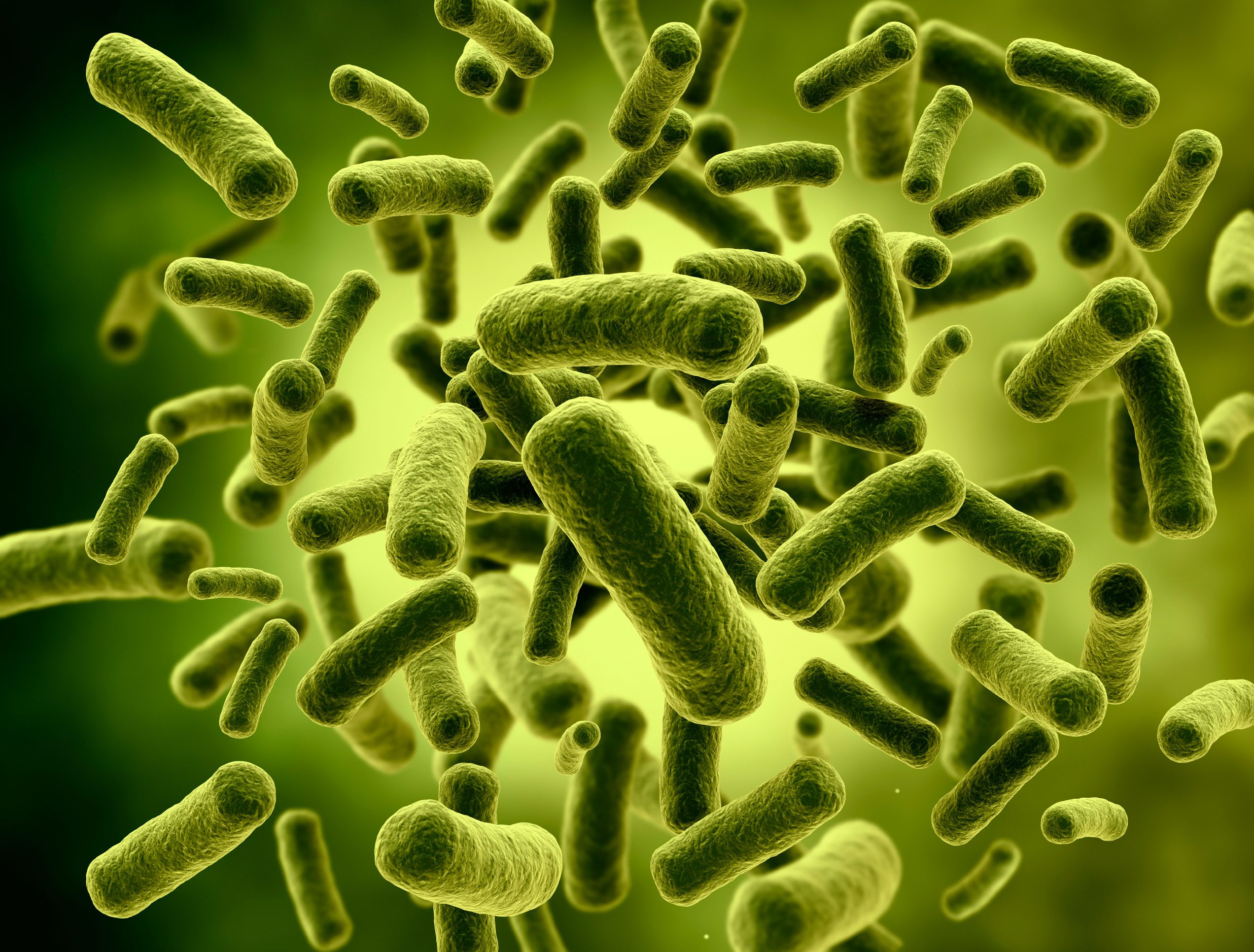
Imagine a busy city at the office time, the sidewalks flooded with people rushing to reach on time at their office or for an appointment. Now picture this at a microscopic level and you have an idea of what the microbiome looks like inside our bodies, consisting of trillions of microbes and thousands of different types of species. These are not just bacteria but also fungi, parasites, and viruses. These species live peacefully in a healthy human body, with the big numbers found in the small and large intestines but throughout the body.
The bacteria in the microbiome promote the digestive system, improve our immune system, prevent the growth of disease that causes by other harmful bacteria, produce vitamins like B, B12, thiamine & riboflavin, and K, it requires for blood coagulation.
Microbes must be diverse and thriving, that do not just promote your mental health but metabolism too. Since we are familiar with microbiomes, now a question occurs; what should we eat to keep microbiomes healthy? Therefore, we have mentioned 6 types of foods, which could be beneficial for your microbiome.
#1. Eat lots of vegetables and fruit.
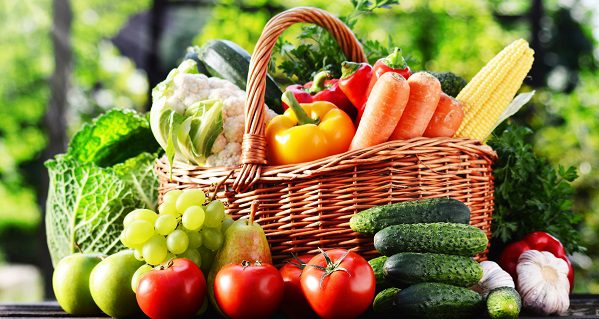
Fruits and vegetables are rich sources of nutrients for a healthy microbiome. They contain a large number of fibers, which your body cannot digest. But certain bacteria in your gut have the ability to break these fibers, which boost their growth. Beans and legumes are also known to be rich sources of fibers.
There are some high-fiber foods available out there, including raspberries, artichokes, green peas, broccoli, chickpeas, lentils, whole grains, bananas, and apples. According to PubMed.gov, a study found that including vegetables and fruits on your daily diet can prevent the growth of disease-causing bacteria.
#2. Eat fermented foods and Probiotics.
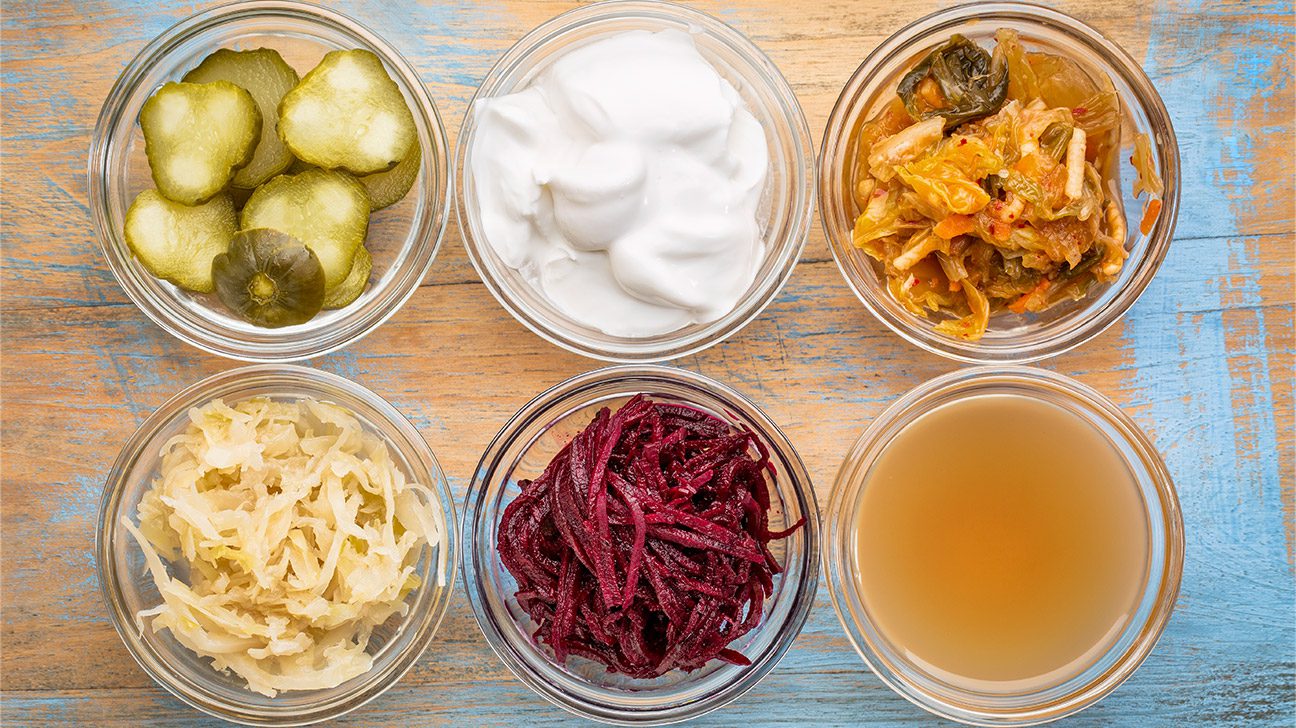
Fermented food has gone through fermentation, a process in which the sugars they contain are crumbled by yeast or bacteria. You can add some of fermented foods like yogurt, kimchi, sauerkraut, Kimchi, Kefir, tempeh and tempeh. Many of these are considered to be rich in lactobacilli – a type of bacteria that can benefit your health.
A source from NCBI shows that people who consume a good amount of yogurt appear to have more lactobacilli in their intestines and less Enterobacteriaceae – a type of bacteria linked with inflammation and several chronic conditions.
Similarly, Yogurt consumption can improve intestinal bacteria and decrease symptoms of lactose intolerance. Moreover, yogurt enhances the function and composition of the microbiome. Keep in mind that many yogurts contain a high amount of sugar. This is why it’s best to opt for plain or unsweetened yogurt.
#4. Eat prebiotic food.
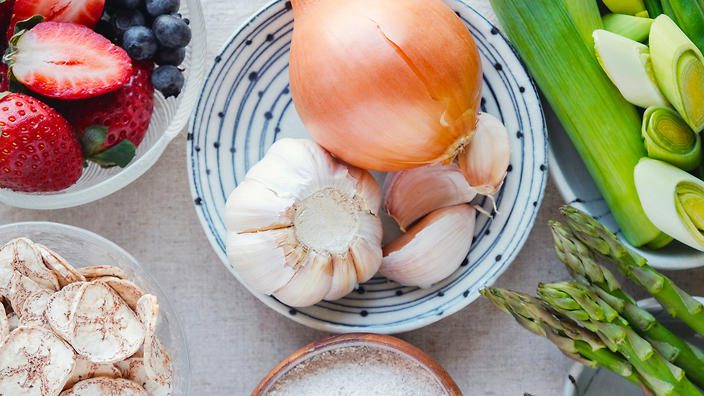
Probiotics are a form of dietary fibers that feeds certain bacteria in your gut. These allow some specific gut bacteria to produce nutrients for your colon cells, that make the digestive system strong.
There are many fruits, vegetables, and whole grains that carry prebiotics, but they can also be found on their own, for example, Resistant starch can also be a probiotic. This type of starch isn’t absorbed in the small intestine and passes into the large intestine, where the microbiota breaks it down for fuel.
Many studies have shown, the prebiotic can support the growth of many types of beneficial bacteria, including Bifidobacterial. Certain prebiotic can decrease levels of insulin, reduce triglyceride, manage cholesterol levels in people with obesity, which can help to prevent many health conditions, such as heart disease and type 2 diabetes.
#5. Eat foods that contain Polyphenols
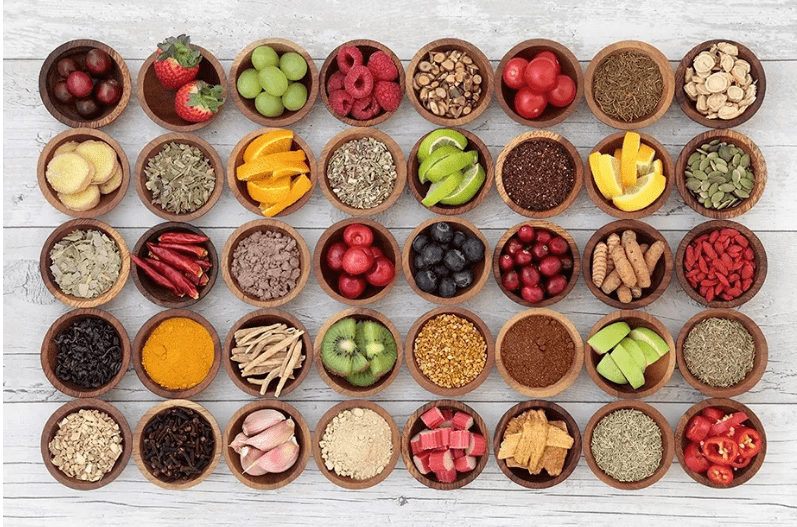
Polyphenols are micronutrients that naturally can be found in plants. These micronutrients can prevent many health issues like reduction in blood pressure, inflammation, cholesterol levels, and oxidative stress. In general, our body isn’t able to digest polyphenols. Because they aren’t absorbed efficiently, most polyphenols make their way to the colon, where these are broken down by gut bacteria.
Some foods have the highest polyphenol, including coca and dark chocolate, red wine, grape skins, green tea, almonds, onion, and more. These foods, especially Cocoa beans can increase the amount of Bifidobacteria and lactobacilli in humans and eliminate the numbers of Clostridial, such type changes in the microbiomes can reduce the level of triglycerides and C-reactive protein.
#6. Consume whole grains.
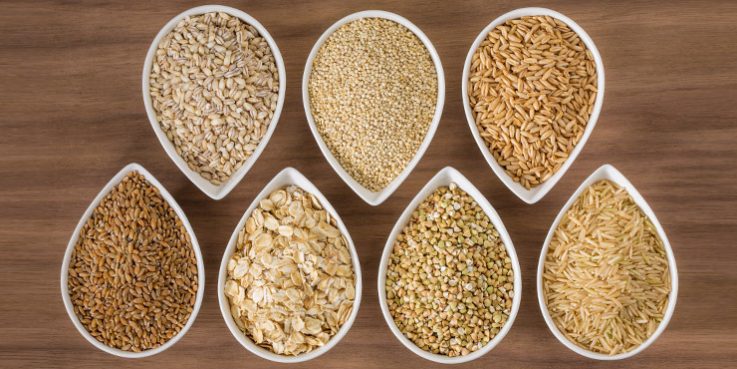
Whole grains offer a complete health package of health benefits, unlike redefined grain, which is stripped of valuable nutrients in the refining process. All whole grains carry a large number of fibers and nondigestible carbs, such as beta-glucan. These carbs are not engrossed in the small intestine and instead make their way to be large intestine to support the growth of good bacteria within the gut microbiome, bacteria like Bifidobacteria, lactobacilli, and Bacteroidetes.
In these studies, whole grains also improve the feeling of fullness and reduce inflammation and a certain risk factor for heart disease. But keep in mind that gluten-containing grains like wheat, barley, and rye – may give a negative impact on the microbiome.
Sources: – health Harvard and pubMed.gov

